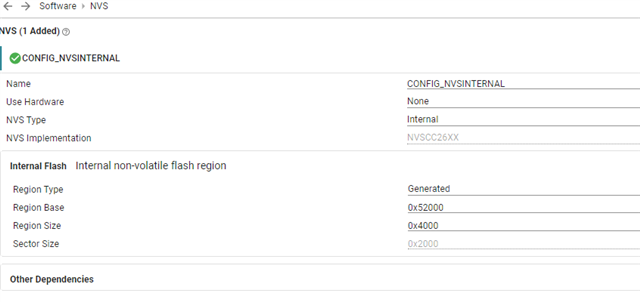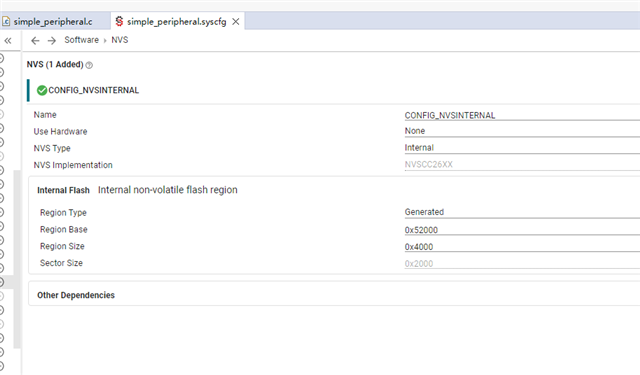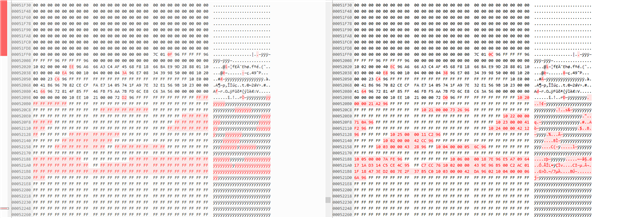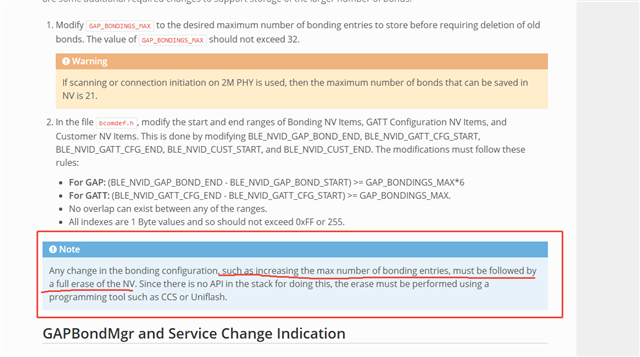Tool/software:
Hello, I am in the following project. C:\ti\simplelink_cc13xx_cc26xx_sdk_7_10_01_24\examples\rtos\CC26X2R1_LAUNCHXL\ble5stack\simple_peripheral。 We have developed our application. We will complete the pairing of jutwork with the mobile app. The NVS configuration of our program is as follows:

Then my new version was developed in the following project: C:\ti\simplelink_cc13xx_cc26xx_sdk_7_41_00_17\examples\rtos\CC26X2R1_LAUNCHXL\ble5stack\simple_peripheral
The NVS area configuration is as follows:

After completing the pairing and binding under the 0710 SDK version, I upgraded to the 0741 SDK version without erasing and downloading NVS and ccfg. However, the encrypted connection could not be completed, and my phone would prompt that the car pairing information was lost.
The following image is a comparison of the NVS readings before and after I upgraded the 0741 SDK version of the program
On the left is the NVS area before upgrading the 0741 SDK, and on the right is the NVS area after upgrading the 0741 SDK

My understanding of the above question is:
The binding information for the NVS region of the same routine in SDK 0710 is not recognized for version 0741.
In addition, I have verified that the upgrade of the same SDK version can be recognized.
Please help confirm the issue and its cause, as well as whether there is a solution that can enable the 0741 version SDK to recognize the NVS data of the 0710 version SDK.



